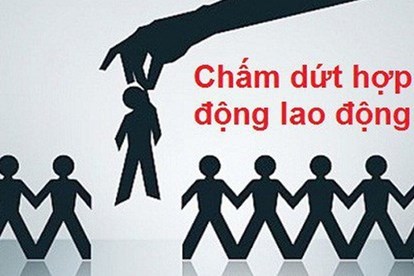PouYuen Vietnam, located in Binh Tan district, HCM City, is a large company with 60,000 workers. Cu Phat Nghiep, chair of the Trade Union, said the orders have been on the decline since March.

The number of orders for June dropped by 50 percent and the decreases are higher for July, August and September. No new order for the fourth quarter has come.
“About 6,000 workers will be laid off. We are considering the list of workers to lay off and we plan to make them public on June 20,” Nghiep said, adding that the 6,000 workers are those in divisions which do not receive orders. The layoff would be implemented within three months, from June 20 to August.
| A survey by VietnamWorks on 400 businesses and 3,400 job seekers during the epidemic and after the social distancing period found that nearly 60 percent businesses are capable of either maintaining or continuing to develop their business. |
Hue Phong Footwear in Go Vap district has sent a document to the HCMC Department of Labor, War Invalids and Social Affairs about the plan to scale down the operation because of Covid-19.
The company has to lay off 2,222 workers from June 16 and relocate its production base to Tra Vinh province.
Not only garment and footwear companies, businesses in the manufacturing industry and service sector are also considering cutting the workforce.
The representative of a game firm in HCM City said revenue had dropped seriously. He has to cut 50 percent of the staff, while the remaining workers would receive 75-80 percent of their salaries.
A survey by VietnamWorks on 400 businesses and 3,400 job seekers during the epidemic and after the social distancing period found that nearly 60 percent businesses are capable of either maintaining or continuing to develop their business.
The businesses that suffered from Covid-19 accounted for 40 percent. Of these, 30 percent of businesses decided to downsize the staff to survive the crisis, while 10 percent decided to reduce the workforce as well as salaries.
Truong Van Cam, deputy chair of Vitas said Vietnam’s garment industry relies on exports. When export markets closed their doors because of the epidemic, the number of orders for products for export decreased by 25 percent in April and 30 percent in May.
The lack of input materials also forced textile and garment companies to scale down production.
A report from the General Statistics Office (GSO) found that foreign-invested enterprises are lacking materials the most, at 39.6 percent. If counting import companies only, the figure would be 56.9 percent. Garment and footwear companies haf the biggest impact, 70.3 percent and 71 percent, respectively.
Le Ha

State organisations propose to send workers abroad
Member of the National Assembly’s Committee for Legal Affairs Pham Van Hoa talks about the added regulation that allows public non-business units run by provincial and municipal People’s Committees to send workers abroad.

Auto manufacturers manage to retain workers
While automobile manufacturers in the world have laid off workers in large quantities to reduce operation costs during the Covid-19 crisis, automobile joint ventures in Vietnam have retained their workforce.
 Thousands of workers in the garment and footwear industries will be laid off soon as companies still cannot receive new orders.
Thousands of workers in the garment and footwear industries will be laid off soon as companies still cannot receive new orders.